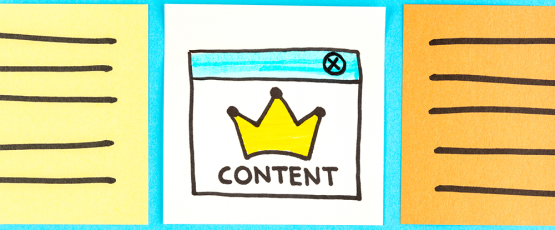
I’m new to search engine optimization and the “behind-the-scenes” part of website design.
I love the visual side of websites, since it heavily influences visitors’ decisions to check it out or pass. However, I’ve come to realize that none of that matters if consumers can’t even find your website on Google.
That’s where SEO optimization, keywords and metadata come in.
First and foremost, “SEO is a set of technical best practices for delivering value to consumers via search engine."
In other words, a good SEO strategy starts with your content and creating a great customer experience on your website, which doesn’t require a high level of tech-savvy or geek speak.
Why is it the "Wizard Behind the Website Curtain"?
Last year, OIA redesigned its website to include both consumer- and agent-facing homepages, awesome new features for members and an arsenal of information for agents to absorb and apply.
To both ensure visibility on search engines and provide agents with valuable information, we launched our blog, IA Revolution.
The idea was to publish frequent, high-quality, unique information and see how this could improve our search-engine rankings.
Before we started this journey, people usually found us by searching phrases related to our brand: “Ohio insurance agents association,” “Ohio insurance agents,” etc.
But what surprised us when we started publishing blog content were the keywords and phrases that we ranked for without really trying, like event speaker names, insurance company names and partner organizations.
OIA’s new website had only been live for about two months, but ranked fairly high for hundreds of keywords and phrases.
This was when we realized the opportunity in SEO and what it can do for a website and business.
We also realized that we still have a lot of work to do.
To start, we need to be deliberate about the topics we publish to earn traffic in specific areas that will help us best serve our clients (independent agents) in the most powerful way (valuation and perpetuation, anyone?).
That’s why SEO is so important.
You might have a great looking website, but there’s no point if your clients can’t find it.
Want to get started on your SEO journey?
Here are 4 tips to help:
-
Start tracking
There are so many free resources out there to get you started. Google Analytics and Google Search Console are invaluable and provide so much insight into how consumers are finding your site, how they interact with your content and what they’re looking for. Google owns over 70 percent of the market share, so optimizing your website and content for Google is a great starting point. -
Don’t start from scratch
Once you get set up, my favorite report to run is on search traffic and search analytics.This shows what queries, including long-tail keywords, your website is ranking for. You can then deep dive into the clicks, impressions, click-through rate (CTR), and position of your website for each of these queries. Ideally, you want to appear in the top 10 so you show on the first Google results page.
-
Look at it from another perspective
Sometimes it’s hard to take a step back and imagine what something is like from an outsider’s perspective.You may be an expert and have a great depth of knowledge on insurance coverages, but Bob or Sue from Any-Town, Ohio probably won’t search for “personal auto insurance,” they’ll more likely just want “car insurance.”
That’s why resources like Answer the Public are amazing tools.
You enter a phrase, and it breaks down these searches by questions, prepositions and comparisons that are typed into search engines. It also lists questions and topics alphabetically to include even more keywords.
-
Put a unique spin on it
There are so many sources for general information (what is car insurance?) – Wikipedia is a perfect example. You don’t want to have to compete with “brand name” websites that will always beat you in domain authority.Instead, hone in on a particular element of that general topic (teen drivers or collector cars).
If you attended IACON17 last year, you likely heard Marcus Sheridan talk about using clients’ questions as a source for blog content.
Don’t overcomplicate it. Write down one question you receive a day, and look at your list at the end of the week. Feel drawn toward a particular question? Write about it.
The most important thing to remember is that any effort sets you apart. It doesn’t have to be perfect. Consider it an experiment at first if that helps you hit publish.
But whatever you do, hit publish!
{^widget|(tagid)87|(displaydirection)horizontal|(path)%2fAgent%2fIA-Revolution%2f%2525|(selecttopn)3|(name)oia_widg_from_the_blog|(headertext)LOOKING+FOR+ADDITIONAL+DIGITAL+MARKETING+ARTICLES%3f|(classnames)OIA.News|(widget_displayname)From+the+News+Desk+(Recent+Articles)|(width)|(height)^}






